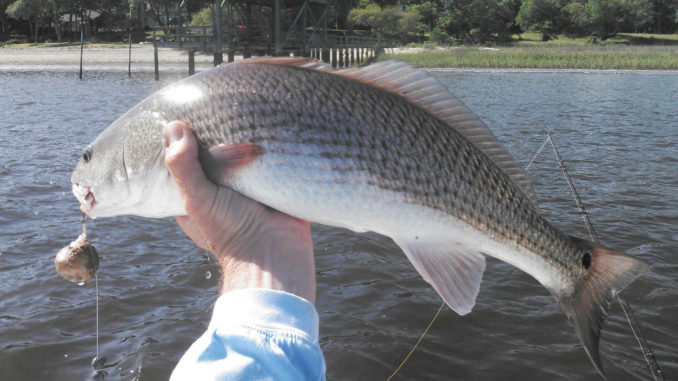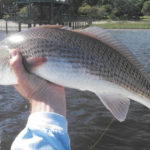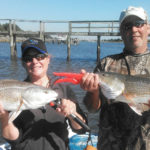
Moulting blues cause reds to strap on their feed bags this month
Redfish are South Carolinas most-treasured fish, year-round residents that are always worthwhile opponents for inshore anglers. As the dogwoods begin to bloom in April, they become extremely discriminating in their food choices because of a flood of molting blue crabs that usually lasts two to three weeks. Other baits will quickly be rejected, but for anglers with a soft crab connection, the action can be incredible for a couple of weeks.
Blue crabs are treasured in many cultures for their rich, delicate flavor, and when they molt, their popularity rises exponentially among seafood connoisseurs. And it’s not just humans toting a fork and spoon. Redfish treasure the annual molting season to take in a rich bite of blue crab in soft, tasty packages.
Guide Greg Holmes of Little River’s Fish Skinny Charters also looks forward to the molting season.
“Reds are coming off their winter lean, and the crabs are so rich,” said Holmes (843-241-0594). “It is all they will eat when the peel goes off in the creek.”
As water temperatures rise, blue crabs leave their winter dormancy and head to the warm, shallow waters to molt. Like clockwork, redfish respond as if they are ready for the shell-shucking, and they will jump all over a morsel of soft crab.
“It’s a big, massive peel that usually starts in April, controlled by the water temperature,” he said.
Crabs begin to molt when the water temperature rises above 60 degrees; it is usually the spawning females that molt first.
While Holmes monitors water temperature, his best gauge for the arrival of peeler crabs is from local crabbers and seafood markets.
“The crabbers are the most-reliable source, but if you don’t have access to a crabber, the local seafood markets will have a bead on them,” he said.
During the spring, reds are in smaller schools, scattered around the estuary. Holmes find them in some of the same places he fishes throughout the year.
“Reds will be scattered out some this time of year at the jetties, up the creeks and along flats next to grassy shorelines with oysters,” Holmes said. “But most of the crabs will be molting in the creeks, which is where I usually start. If the fish are there, they will eat it pretty quick.”
Not only are soft crabs a delicacy for redfish, the two-legged users love them, and that can inflate their cost. Luckily, anglers can get several baits off of each crab and several fish off each bait, if rigged correctly.
In an effort to get more use out of the delicate soft crabs, Holmes places small pieces of soft crab inside a bag he creates from panty hose.
“It’s all about the smell. I can catch several fish on the same piece of soft crab when using the panty hose. Otherwise, you would only get one or maybe two casts off the bait,” he said.
He will hook the pantyhose bait bag on a 1/0 or 2/0 Owner Mutu Light hook with just enough weight to keep the bait in one place.
When the soft-crab season begins, panty hose and soft crabs can make for some of the best action of the year.






Be the first to comment